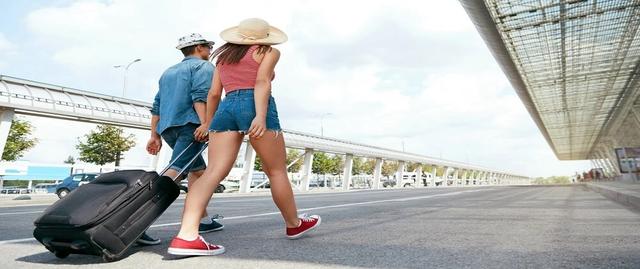
12 Most Dangerous Neighborhoods in Detroit
By: ROS Team
Detroit, often referred to as the Motor City, holds a significant place in history and culture. However, it has encountered various urban trials, including elevated crime rates.
To comprehend the most dangerous neighborhoods in Detroit is vital for residents, visitors, as well as policymakers.
By delving into crime statistics and influential factors, we can obtain a deeper understanding of the intricate dynamics inherent in these communities.
In this guide, we will uncover the most dangerous neighborhoods in Detroit and delve into the underlying factors that contribute to their challenges.
Worst Neighborhoods In Detroit
When analyzing crime data and considering various factors, several neighborhoods in Detroit stand out as having higher crime rates and safety concerns.
It’s important to note that while these neighborhoods may have higher crime rates, it does not define the entire community or the people who live there.
Let’s explore some of the most dangerous neighborhoods in Detroit:
1. Forest Park:
Forest Park, despite hosting Detroit’s branch of the Federal Reserve, encounters notable economic and social obstacles and is considered the worst part of Detroit.
With only 1,044 residents, the neighborhood confronts a staggering 16.1% unemployment rate and a meager median income of $14,872.
Furthermore, the area has experienced an unfortunate surge in car thefts, compounding the challenges faced by its residents.
2. East Detroit (Eastside):
The Eastside of Detroit faces considerable challenges related to crime and safety. Factors such as poverty, unemployment, and deteriorating infrastructure contribute to the higher crime rates in this neighborhood.
Residents in some parts of the Eastside often experience issues with violent crimes, drug-related activities, and property crimes.

3. Southwest Detroit:
Southwest Detroit has a diverse community and a rich cultural heritage, particularly with its Latinx population.
Unfortunately, the neighborhood has faced persistent safety concerns, including gang-related activities and drug-related crimes.
Community organizations and local initiatives are actively working to address these issues and promote a safer environment.
4. Brightmoor:
Brightmoor has experienced significant economic and population decline over the years, resulting in higher crime rates.
Issues such as drug-related crimes, property crimes, and violence pose challenges for residents in this neighborhood.
Over a span of 40 years leading up to 2011, the population of Brightmoor experienced a decline, further exacerbated by the emergence of crime in the 1990s and 2000s, which prompted more residents to leave.
Despite the challenges, there are community-led efforts to revitalize and improve safety in Brightmoor.
5. Fiskhorn:
Fiskhorn, located in Detroit, Michigan, is a neighborhood with a population of 1,910. It is situated in Wayne County. Living in Fiskhorn provides residents with a dense suburban atmosphere, and the majority of residents rent their homes.
Fiskhorn has crime rates that are 123% higher than the Detroit average. Factors contributing to the higher crime rates may include socioeconomic challenges and a lack of resources.
6. Franklin Park:
Franklin Park experiences crime rates that are 406% higher than the national average. The neighborhood may face issues related to poverty, limited economic opportunities, and social disparities.
Targeted interventions and community empowerment are crucial for addressing the safety challenges in Franklin Park.
7. Greensbriar:
In 2022, Greensbriar had a crime rate 549% higher than the national average. Factors such as unemployment, poverty, and a lack of community resources contribute to the safety concerns in Greensbriar.
It is vital to engage with residents and implement comprehensive strategies to improve safety and quality of life in the neighborhood.
8. Van Steuban:
Van Steuban experiences a crime rate that is 134% greater than the Detroit average.
Factors such as socioeconomic disparities and limited community engagement may contribute to higher crime rates.
Strengthening community bonds, enhancing security measures, and promoting educational opportunities can help address safety issues in Van Steuban.
9. Warrendale:
Warrendale, situated in Detroit, Michigan, is a neighborhood that shares borders with Greenfield Road, Joy Road, and the Detroit city limits. Additionally, Warrendale is adjacent to Dearborn on two sides and Dearborn Heights on another side.
Warrendale is considered one of the worst neighborhoods in Detroit, with numerous reports of break-ins, assaults, and robberies.
The neighborhood faces various challenges, including poverty, unemployment, and deteriorating infrastructure.
10. Belmont:
Belmont is a neighborhood in Detroit, Michigan, comprising a population of 2,719 residents. The neighborhood has a crime rate of 14,048 per 100,000 people. Factors such as poverty, substance abuse, and limited access to social services contribute to the safety concerns in Belmont.
11. Poletown East:
Despite its proximity to a General Motors assembly plant, Poletown East experiences a high unemployment rate of 14.9% and a low median income of $16,286.
The neighborhood has crime rates that are 219% higher than the national average.
The neighborhood may face challenges related to socioeconomic disparities and limited community resources.
12. Carbon Works:
Carbon Works, situated along the Rouge River, is a working-class neighborhood that has encountered more prosperous times in the past. The 615 residents of this area currently confront a 14.7% unemployment rate and a median income of merely $33,125.
Crime rates in Carbon Works are 367% higher than the national average. Factors such as economic instability, drug-related activities, and limited community cohesion contribute to the safety challenges in Carbon Works.
Bad Areas Of Detroit: Takeaway
Examining the most dangerous neighborhoods in Detroit reveals the complex challenges faced by these communities. While crime rates and safety concerns are significant, it is essential to approach these neighborhoods with empathy and understanding, recognizing the resilience and potential for change within them.
Related Article:



